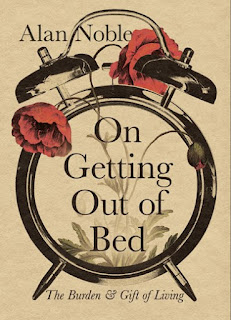"A Reader's Guide to the Bible" by John Goldingay. A Review
 A Reader's Guide to the Bible by John Goldingay
A Reader's Guide to the Bible by John GoldingayMy rating: 5 of 5 stars
Over the years I have observed that many Christians struggle with reading the Bible. When we have talked it becomes clear that the majority of them have difficulty connecting the dots: fathoming how it all fits together and why. John Goldingay, the David Allan Hubbard Professor of Old Testament at Fuller Theological Seminary, has just provided a comfortably readable aid for interested Christians in his brand-spanking-new "A Reader's Guide to the Bible." This 192 page softback easily tackles the big picture of Scriptures' trajectory, and the overall emphasis of the different genres in the Bible. It is written for interested students of Scripture, whatever stage of their faith-walk they may be in.
"A Reader's Guide to the Bible" begins by covering the historical and political events surrounding the Scriptures from the creation account through the Assyrian and Babylonian exiles to the time of Jesus and just beyond. Next, the author sketches out the geographical details where most of the biblical story unfolds. Though the material may appear elementary for more seasoned disciples, nevertheless newer readers will likely have some "Aha!" moments that will enable them to grasp the "why" and "wherefore" of certain episodes in Scripture.
The remainder of the book covers the sixty-six books of Scripture simply and helpfully. Here Goldingay lumps together the sacred writings in a way that gives the learner a solid sense of how the story of God and his people flows together. The author addresses themes, styles, purposes and goals of the various books of the Bible, and how they fit. Yet even more importantly, the author keeps the main point the main point; "The writers imply that their story is basically historical, but they invite us to respond to it as it stands as a story, to see what it means and what it has to say" (34-5).
The final chapter is a delightful and essential conclusion to the whole volume. Goldingay explains the significance and value of the Old Testament for Christians, and its deep-rooted connection to the New Testament. The author basically takes on N.T. Wright's position of the five-act play, where each act is significant, makes the story as a whole, and finds it's climax in one of the latter acts; "the Old Testament leads to the New and hints at what becomes explicit there" (180).
"A Reader's Guide to the Bible" is a very useful manuscript. I wasn't always satisfied with some of the author's assertions (i.e. multiple authors of "Isaiah," the date of Daniel's writing, etc.), nonetheless it is a masterful tool that is well written and brilliantly simple. This book would be perfect for a high school and adult Christian Education class in a congregation; as well as an "Introduction to the Bible" college course. Also, if a person is looking for a personal resource that will bring some clarity to their reading of Scripture, then they will find this to be just the volume the need. I happily and highly recommend this book.
Thanks to IVP Academic for providing, upon my request, the free copy of the book used for this review. The assessments are mine given without restrictions or requirements (as per Federal Trade Commission’s 16 CFR, Part 255).
[You may purchase the book here: IVP Academic]
View all my reviews



Comments